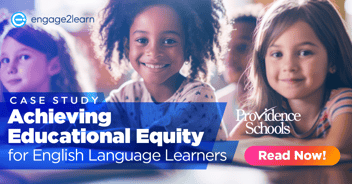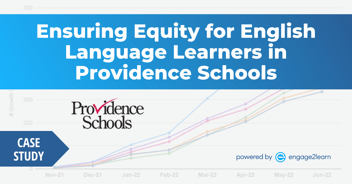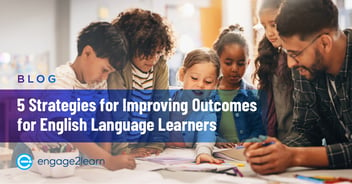Achieving Educational Equity for English Language Learners
Leslie and her family recently relocated to Rhode Island from their home in Central America in search of a better life. Back home, Leslie was a top student in her class. She excelled in science and dreamed of becoming a doctor. Now in Rhode Island, Leslie must learn all the same subjects that she loved so much back home… in English, a language she’s never spoken before.
Fortunately for Leslie, her teacher is well versed in a variety of instructional strategies that are designed to ensure Leslie masters all the same science content as her English-speaking peers. Leslie’s teacher is also including strategies for English language acquisition and valuing the rich cultural contributions Leslie brings from her home country.
As a result, Leslie’s dream of becoming a doctor can become a reality because potential barriers have been removed. This is equity.
I have long believed that the success of the public school system depends on our ability to achieve educational equity for every learner. Just as we know that receiving a good education throughout childhood plays a critical, positive role in a person’s earnings, health, and general quality of life throughout adulthood, we also know that the long-term social, emotional, and financial costs of a poor education can be high.
RELATED: How Opportunity Leads to Student Success
It’s important to note that “good education” and “poor education” are relative. If a district lacks educational equity, two students in the same classroom with the same teacher and the same materials can easily result in entirely different learner outcomes. Often, when students fall behind, it is because the system has not been set up in a way to meet the student’s unique needs and failed to set them on an individualized path toward achievement.
The system lacks educational equity.
This all-too-common scenario is a clear example of the difference between equality and equity. This classroom exhibits equality, providing each student access to the same resources and opportunities. However, without recognizing that each student comes from different circumstances and providing differentiated resources to meet their unique learning needs, educational equity is missing.
“Equality is giving everyone a shoe. Equity is giving everyone a shoe that fits.”
Naheed Dosani
The Rapid Growth of English Language Learners
When we think about educational equity, we have to consider every kind of learner. For example, according to the National Education Association (NEA), English language learners (ELLs) are the US’ fastest-growing student group, currently making up 10% of K-12 students. The NEA predicts that by 2025, the number of ELLs nationwide will grow to 1 out of every 4 students – as exciting a shift as it is challenging.
With over 400 different languages spoken by K-12 students across the country, educational equity for English language learners is not a want; it’s a need.
Supporting ELLs in Providence Public Schools
Across the Providence Public School District (PPSD) in Rhode Island’s capital, ELLs currently make up 31% of the student population. Like many districts, PPSD is in the process of ensuring that they have sufficient ESL Certified teachers to meet student needs. Because of the larger-than-average ELL population, the path toward creating equitable learning experiences for multilingual students starts with providing equitable support for their teachers.
Knowing this, district leaders and stakeholders collaborated with engage2learn to create a comprehensive coaching and growth plan designed to streamline district-wide priorities, goals, teacher training, and instructional methods at the start of the 2021-2022 school year, focusing on equitably supporting English language learners.
Through this process, I had the opportunity to collaborate with Jennifer Efflandt, PPSD’s Executive Director of Multilingual Learners. Together we created a plan to provide coaching support for teachers across the district.
“We didn’t have the capacity with our in-house coaches to meet the need before. Now we’re using engage2learn to support us and our teachers through one-on-one coaching on those practices that teachers are now implementing in the classroom,” said Jennifer.
With clear, unified goals and a newly designed MLL Best Practices Rubric customized specifically for the needs of PPSD students, the district hit the ground running. In November 2021, hundreds of PPSD teachers began working with Certified e2L Data-Informed Growth Coaches. Through personalized goal setting and frequent coaching conversations, teachers began working towards proficiency in the skills that would allow them to better facilitate student achievement, engagement, and life-ready skills that leverage student cultural and linguistic capacities.
Naturally, this partnership was an adjustment for many teachers.
“The idea of having a coach is new to many teachers, so at the beginning, we did experience some resistance and hesitation. Initially, teachers had the feeling that they were getting a coach because they were doing something wrong or that they were in trouble,” said Jennifer. “That’s decreased significantly. It took a minute, but we just had to change our mindset and understand that every single teacher benefits from coaching.”
RELATED: 3 Misconceptions About Instructional Coaching
Following an 80/20 coaching model that the district desired for their teachers, coaches spend 80% of their time in the classroom assisting teachers with practical implementation and 20% of their time in 1:1 coaching conversations to track progress, problem solve, exchange ideas, and celebrate accomplishments. This model allows for job-embedded training that gives teachers the tools they need to influence student achievement and ample time for strong relationship building between coaches and coachees.
Sandra Stuart, Chief Student Support Officer for the district, has watched these relationships blossom in real time:
“We have a program here for students who are overage and need just a few more credits to graduate. I was at a recent graduation, and an e2L coach was there. It was so nice to see how she was sitting with the faculty – how she was part of the faculty. In the end, they were all taking pictures, and you could tell that the coach had really built strong relationships with the teachers at their school. Another time, about two or three weeks ago, I was [logged] on an e2L coaching session. The teacher came on first and immediately said, ‘My coach is so great. I love meeting with her.’ She was just really excited about sitting with her coach and going through their coaching session. That was so nice to see.”
Maximizing the impact of coaching through e2L's all-in-one instructional coaching and talent development platform is a critical element in PPSD’s work towards building educational equity. With GroweLab, teachers are able to set growth goals, document coaching conversations, upload evidence to classroom implementation, receive endorsements from coaches and peers, and earn achievement badges as they make progress toward their goals. This platform not only allows teachers to see hard evidence of their own growth, but fosters an encouraging school culture and boosts morale.
Similarly, school and district administrators utilize the advanced data analytics and reporting in GroweLab to track and analyze teacher growth, an early indicator of student achievement. As GroweLab aggregates both educator growth and student achievement data, school and district leaders are able to see everything from big-picture, district-wide impact to individual teacher, cohort, and/or school growth trends.
“It’s great to be able to look [in GroweLab] and see the number of teachers moving along their rubrics, accomplishing their goals, and earning their badges."
Sandra Stuart
In less than six months, PPSD teachers have collectively earned nearly 1000 badges, mastering instructional best practices like differentiation and scaffolding, assessment and formative feedback, small group instruction, and more. Even as the district waits for student assessment results, they can feel confident that growth is happening at every single school.
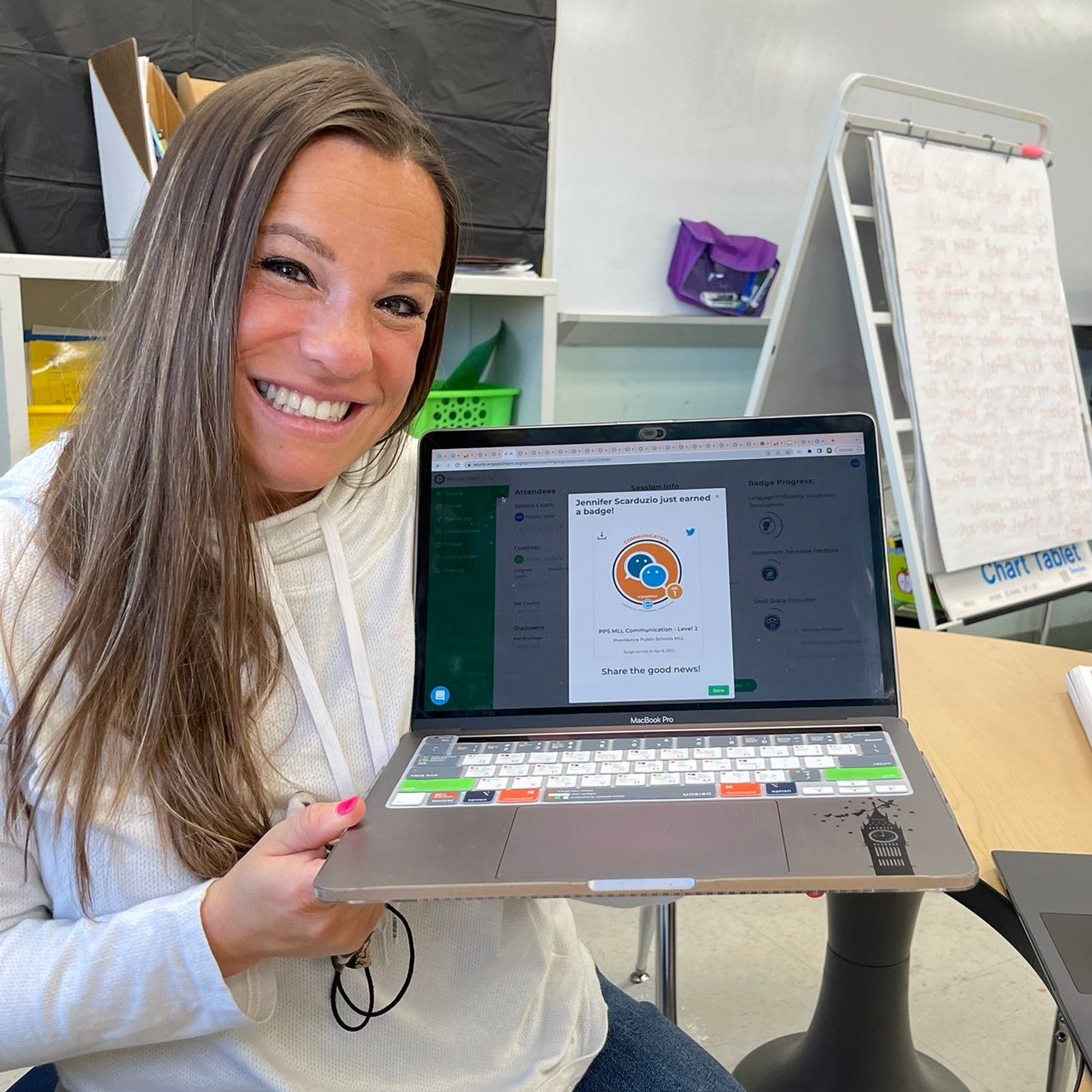 |
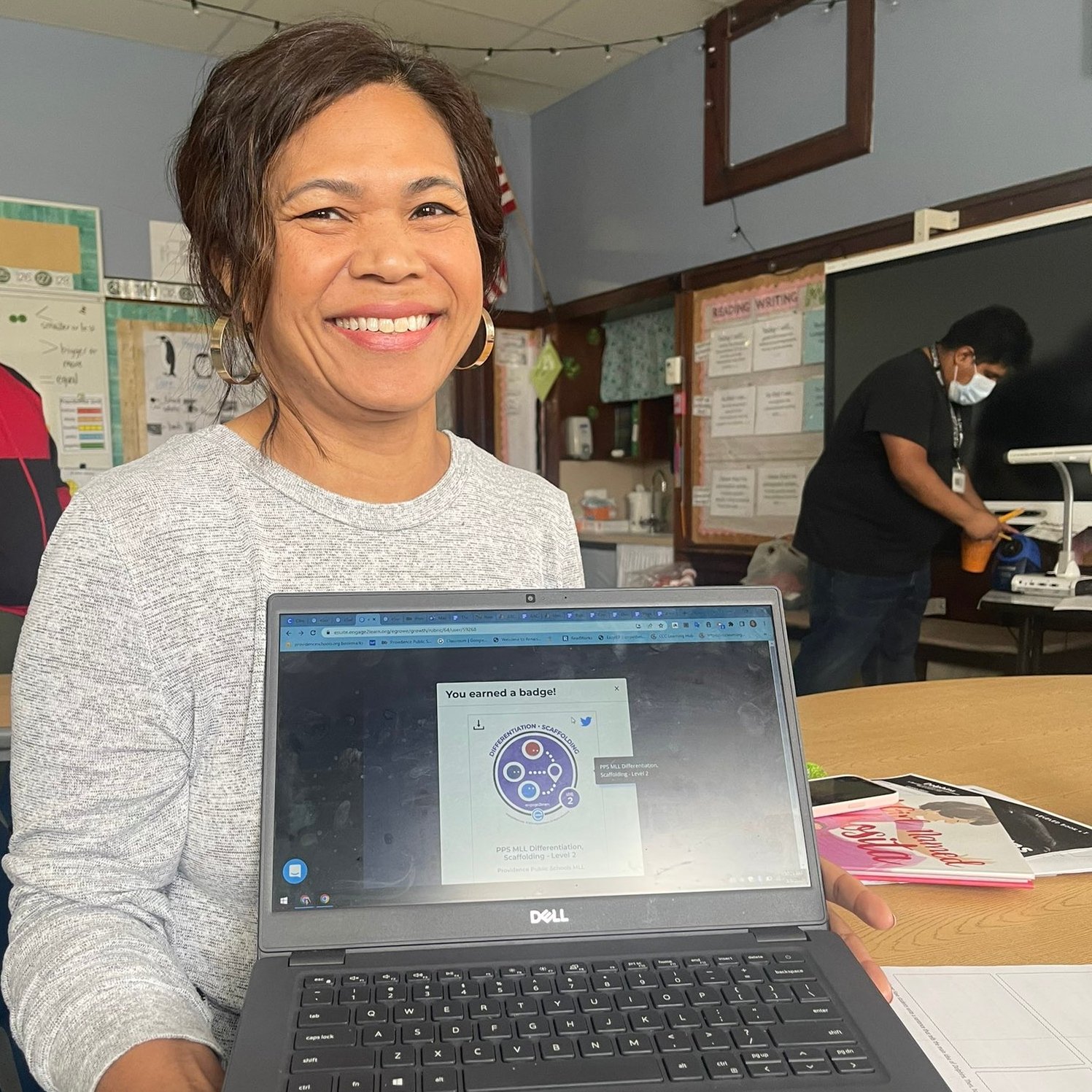 |
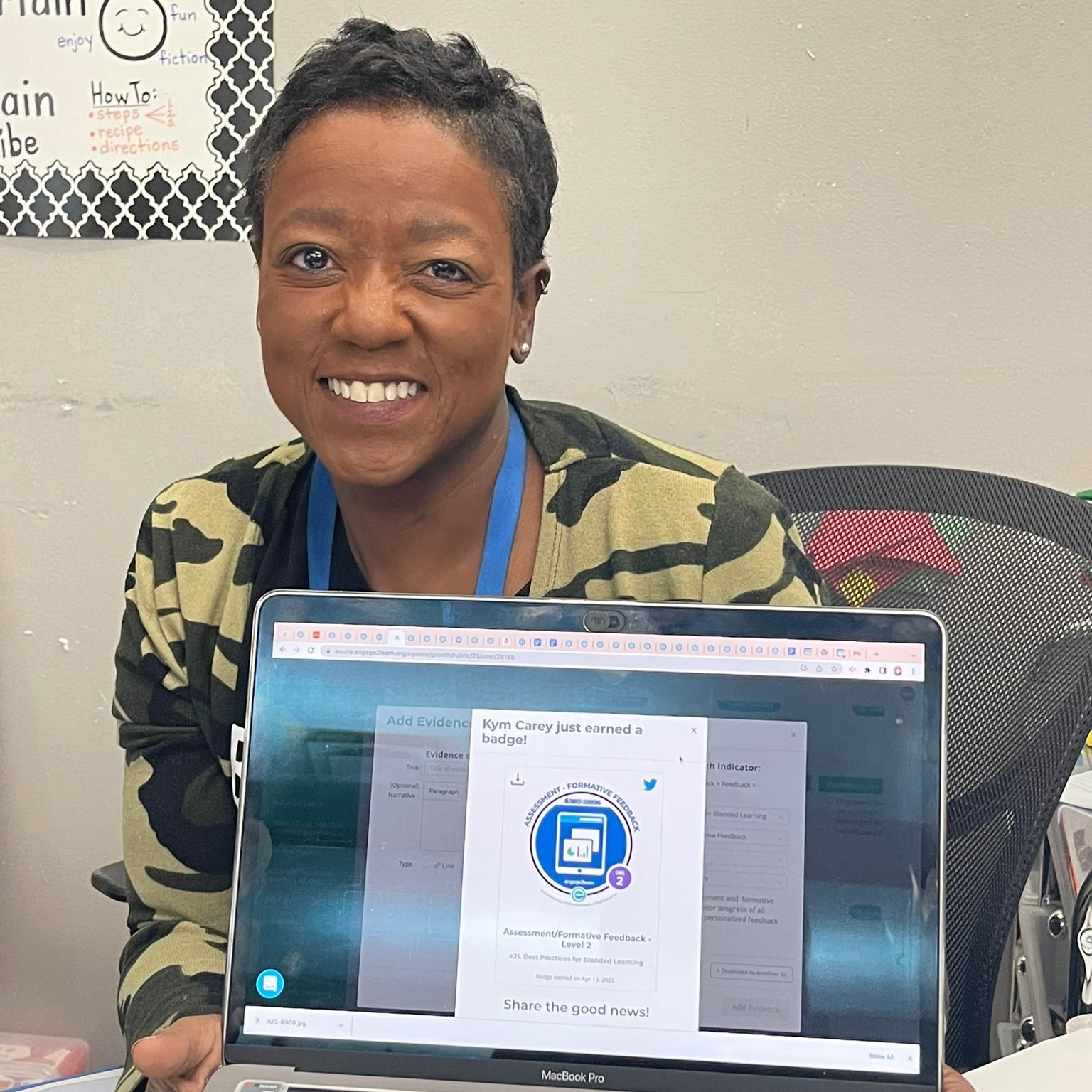 |
In PPSD, teachers, staff, and coaches are working hard to create a culture of intentional educational equity that fits every single learner, ensuring that receiving a “good education” or a “poor education” will not be left up to chance. With job-embedded training, tangible instructional tools, scalable best practices, and celebrations of growth every step of the way, ELL teachers are well on their way toward creating a lifelong, positive impact on all of their students.
Want to learn more about how expert, job-embedded coaching can transform and build educational equity in your district? Explore partnership options with e2L today!

